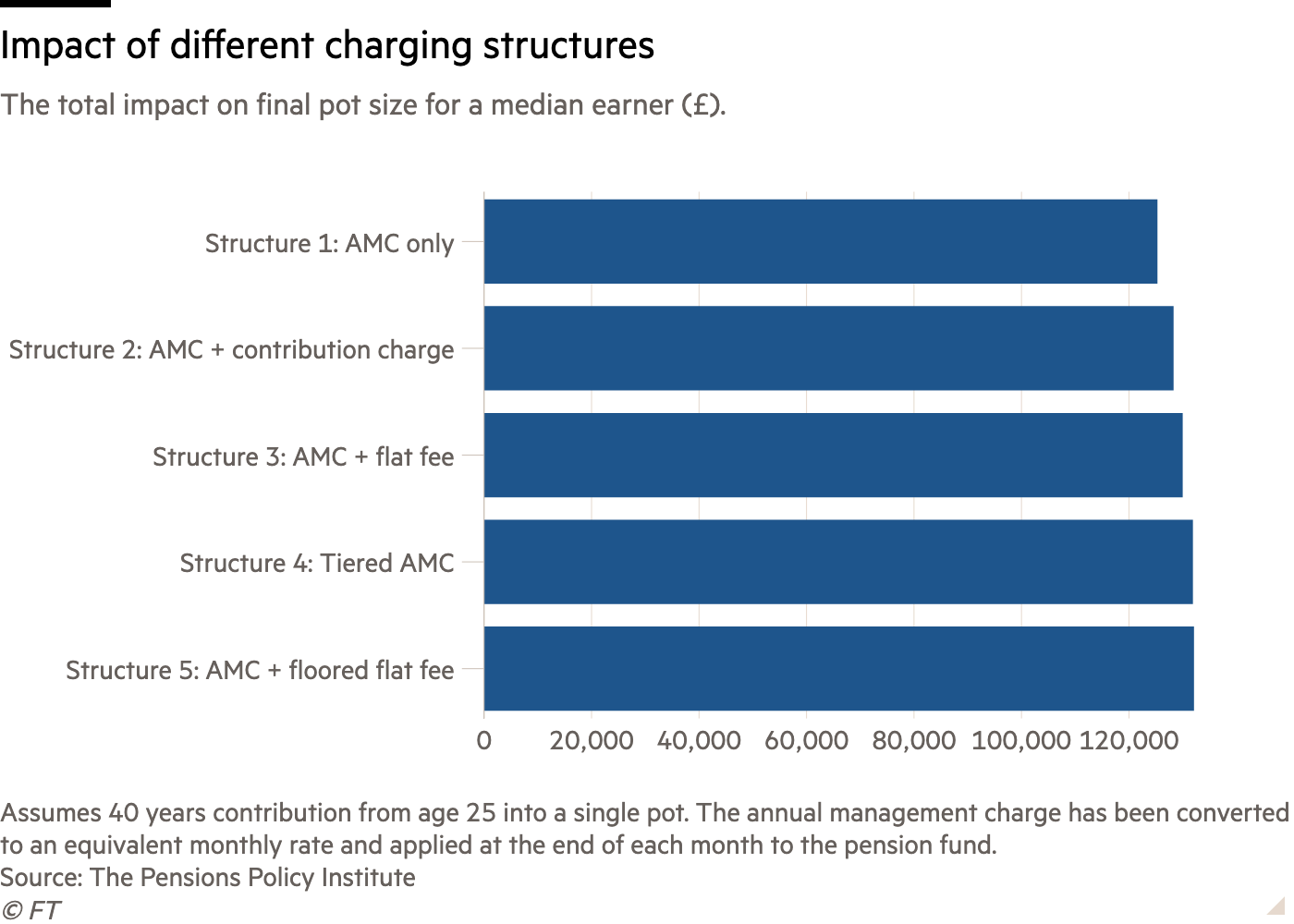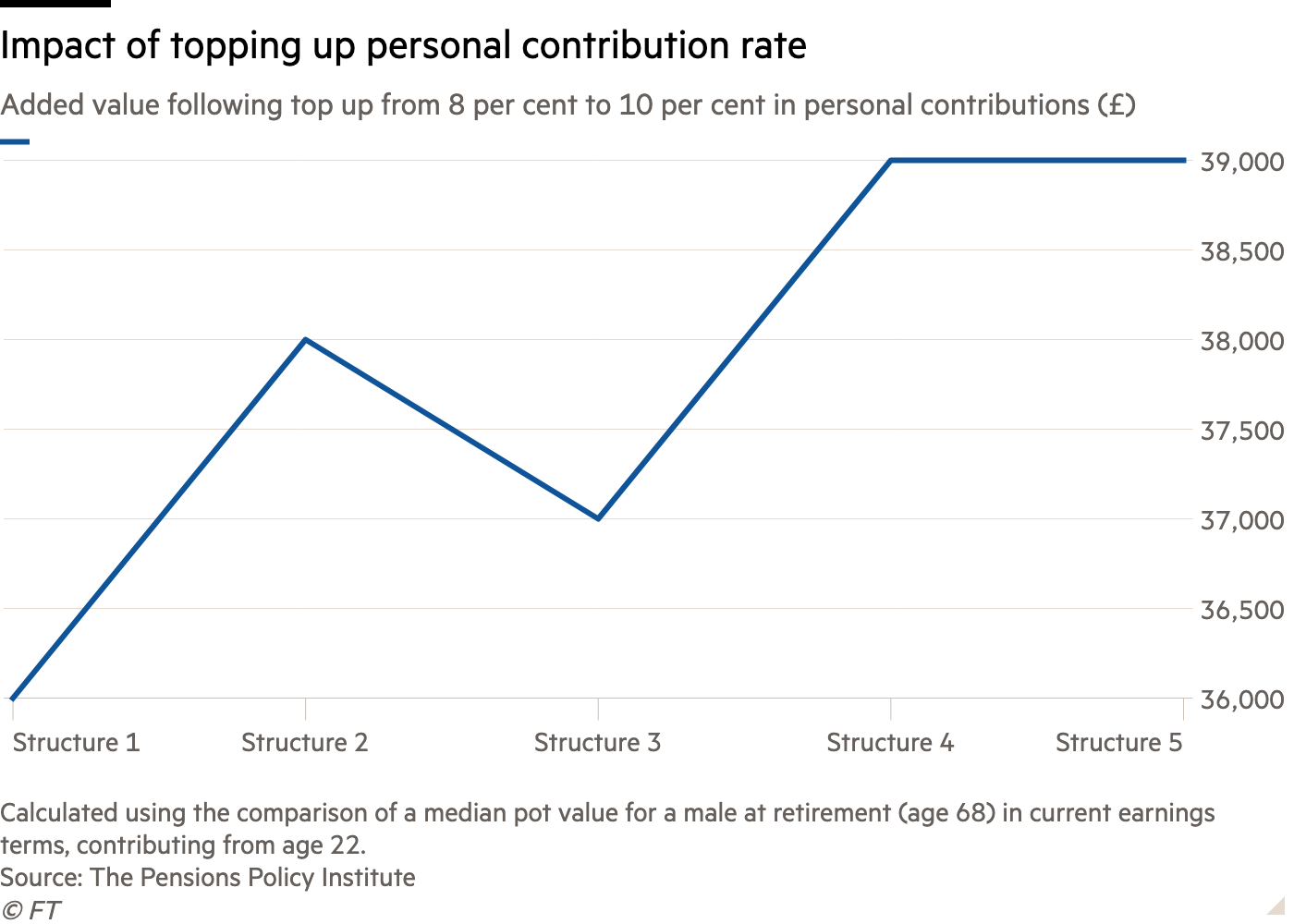Data crunch: Low costs and charges alone do not guarantee good value for members’ pension savings, research by the Pensions Policy Institute shows.
Opaque charging structures and high transactional costs can have some impact on member outcomes, according to recent analysis by the PPI sponsored by Smart Pension, but other factors such as investment performance, members paying in for longer, and increasing contributions also play a key role.
The report examines how five different charging structures impact an individual scheme member’s final pot after 40 years.
A low charge does not guarantee good value
The report states there is only a small difference between different charging structures that meet the government’s charge cap, currently set at 0.75 per cent of assets.
While there is a significant difference in pot size after long-term accumulation under a single charging structure, no single structure provides consistently better outcomes for savers with different characteristics.
The report also suggests that a lack of pension engagement, poor scheme governance and multiple small pots could all have an equally detrimental effect on potential outcomes as from high costs. A common framework for judging value for money would help members better understand what each scheme offers, the PPI find.
The analysis is based on PPI modelling and interviews with the pensions industry, including the Department for Work and Pensions.

Member contribution levels significantly impact member outcomes
The analysis also shows that savers contributing an extra 2 per cent of salary on top of their statutory minimum contribution into their workplace pension will achieve a 25 per cent increase in retirement income, regardless of the charging structure they are in.
Commenting on the figures, Darren Philp, director of policy and communications at Smart Pension, says: “This modelling demonstrates how even a small increase in contributions can have a dramatic impact on retirement outcomes, regardless of costs and charges.
“This needs to be communicated more effectively so that members are at least aware that saving more now can have considerable positive benefits over the longer term.”
It’s a good idea for employees to make voluntary contributions on top of the statutory minimum
Adrian Boulding, Now Pensions
He adds: “We are exploring innovative ways of helping people embed positive behaviours through the use of celebratory moments.”
No single strategy can guarantee better outcomes alone
If charging structures that appear to offer a low charge for savers do not guarantee good value, what can the industry do to help people achieve an retirement income that meets their needs?
Mark Baker, senior policy researcher at the PPI, explains: “Charging structures and levels do have an important role to play in determining savers’ retirement outcomes, but they should be understood alongside a number of other factors, such as contribution levels, investment strategies, the impact of accumulating multiple pots, the strength of governance oversight and member communications and experience.”
He adds: “There are potential approaches that can assist savers to optimise the value of their pensions, such as retaining the same pension throughout their working lives or taking their pot with them when they move between employers.”
“However, none of these strategies will guarantee better outcomes alone.”
Does the DC charge cap hinder value for money?
The focus on costs in recent years has led to a number of trends that may not be in the long-term best interests of members, writes Redington’s Jon Parker. Read more.
Also commenting on the findings, Adrian Boulding, director of policy at Now Pensions, says: “It’s a good idea for employees to make voluntary contributions on top of the statutory minimum, and the good thing about those contributions being voluntary is that they can increase or decrease them according to affordability.”
He adds: “Provided they understand their employers payroll cut off dates, the voluntary contributions can flex up and down.”
Mr Philp adds: “Clear and transparent charges are absolutely essential. Without them how can people assess value for money? But we need to develop a common framework for assessing, and importantly, comparing value.
“There is inevitably an element of judgment in such an assessment, which is where robust governance must come to the fore.”























